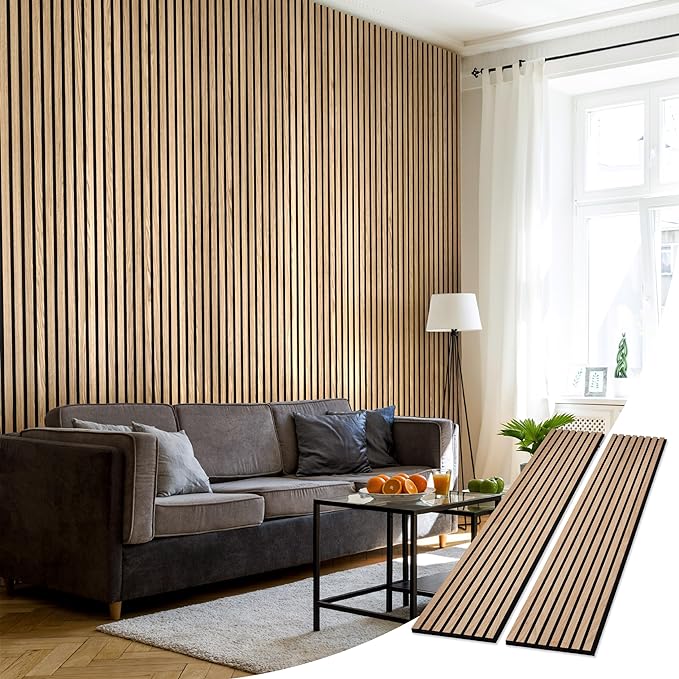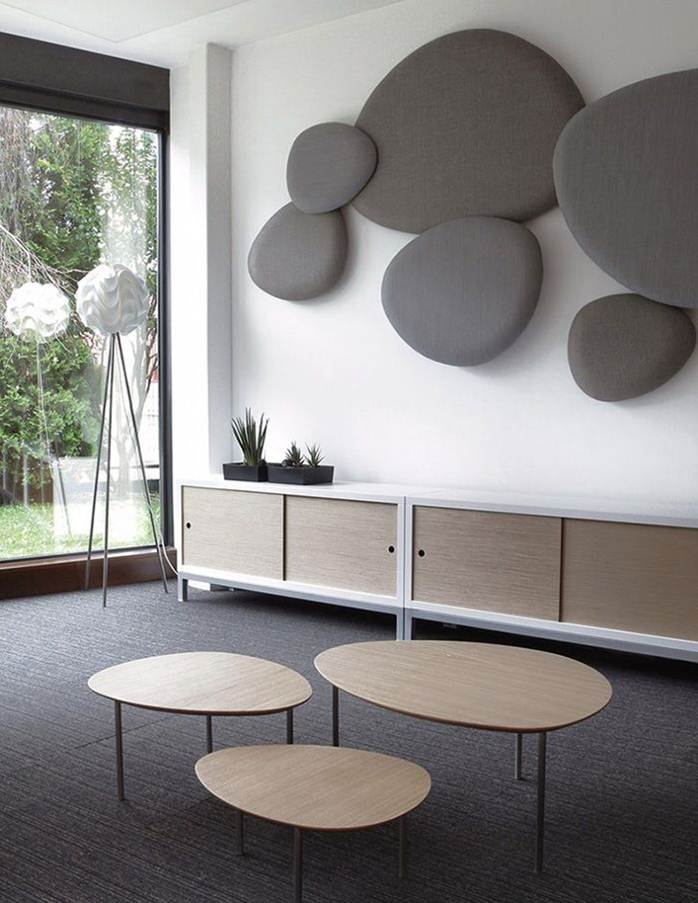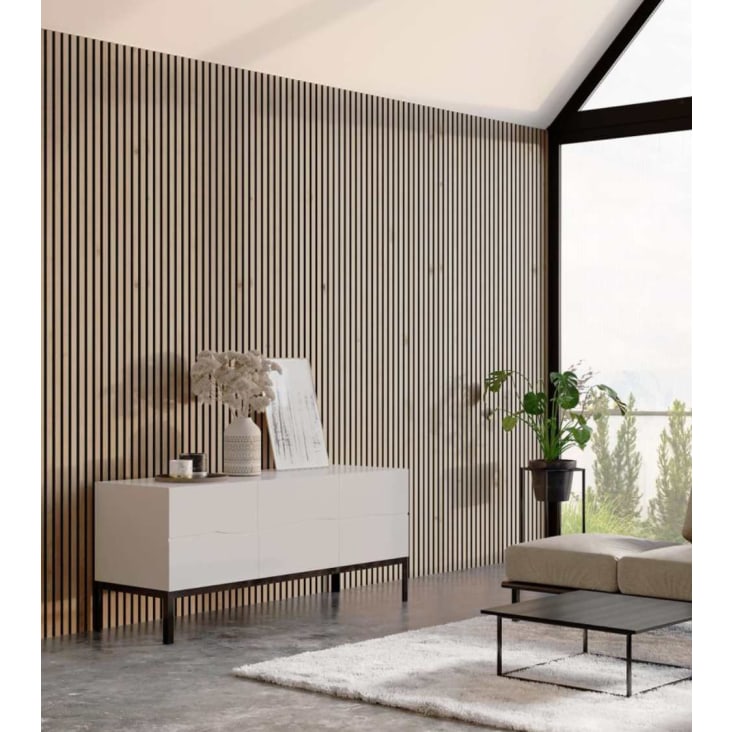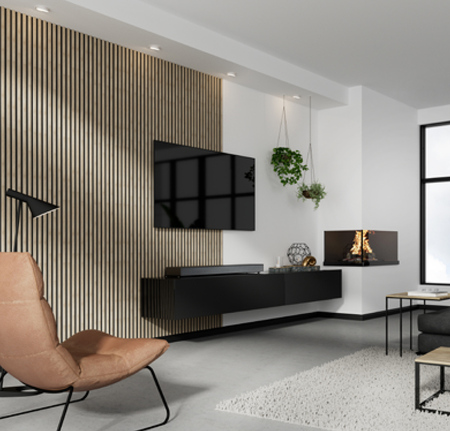When it comes to creating a serene and aesthetically pleasing environment in your home or office, few solutions are as effective and stylish as decorative acoustic panels. Having explored various soundproofing solutions myself, I can tell you that these panels not only enhance sound quality but also add a unique touch to your decor. In this article, we’ll delve into everything you need to know about decorative acoustic panels, from their benefits to different types, installation tips, and much more!
What Are Decorative Acoustic Panels?
Decorative acoustic panels are specially designed panels that help absorb sound waves, thus reducing noise levels and echo in a space. Made from various materials and available in numerous designs, these panels can enhance both the functionality and aesthetic of any room.
How Do Acoustic Panels Work?
These panels work primarily by using sound-absorbing materials that counteract sound waves. When sound waves hit the panels, the material absorbs them instead of reflecting them, leading to a quieter, more controlled acoustic environment.

Common Materials Used
- Foam
- Fabric-covered fiberglass
- Wood
- Metal
- Recycled materials

Benefits of Using Decorative Acoustic Panels
Enhancing your space with acoustic panels goes beyond mere aesthetics. Here’s a breakdown of the key benefits:

1. Noise Reduction
The primary function of acoustic panels is to reduce unwanted noise, making them ideal for busy offices, recording studios, or any space where noise control is crucial.
2. Improved Sound Quality
These panels enhance sound quality, making them essential for settings where clarity is vital, such as in music studios or conference rooms.

3. Aesthetic Appeal
With a plethora of designs and finishes, decorative acoustic panels can seamlessly integrate into your decor, adding to the visual appeal of your space.
4. Versatility
Whether you need panels for a home theater, music studio, or office, there are different styles and sizes available to suit any environment.

5. Eco-Friendly Options
Many manufacturers offer eco-friendly panels made from sustainable materials, appealing to environmentally conscious consumers.
Types of Decorative Acoustic Panels

Decorative acoustic panels come in various shapes, sizes, and materials. Here’s a look at the most popular types:
1. Wall Panels
Wall-mounted panels are a common choice for offices and homes, offering significant sound absorption while enhancing wall decor.

2. Ceiling Panels
Ceiling-mounted options help reduce echo and provide sound insulation from the above floor in multi-story buildings.
3. Freestanding Panels
These portable panels can be moved easily to create temporary sound barriers, making them ideal for flexible spaces.
4. Baffles
Hanging baffles are particularly effective in large spaces like auditoriums, helping to manage sound distribution throughout the room.
5. Custom Panels
For those looking for a unique touch, many companies offer custom designs that reflect your personal style or branding.
Comparison of Different Acoustic Panels
| Type | Material | Noise Reduction | Aesthetic | Cost |
|---|---|---|---|---|
| Wall Panels | Fiberglass | High | Varied | $50-$200 |
| Ceiling Panels | Foam | Medium | Modern | $40-$150 |
| Freestanding Panels | Wood | Varies | Stylish | $100-$300 |
| Baffles | Recycled materials | High | Contemporary | $200-$500 |
| Custom Panels | Varies | High | Unique | $200+ |
Installation Tips for Acoustic Panels
Installing decorative acoustic panels can be a straightforward task if you follow these steps:
1. Choose the Right Location
Identify areas where sound issues are prevalent. Corners and areas with hard surfaces often require additional sound absorption.
2. Measure and Plan
Before installing, measure the wall or ceiling area to determine how many panels you’ll need. Planning their arrangement for maximum effectiveness is crucial.
3. Use Quality Adhesives or Mounting Hardware
Ensure you use the right adhesives or mounting hardware to secure the panels effectively without damaging the walls.
4. Consider Professional Help
If you’re unsure about installation, seeking professional assistance can save time and ensure optimal placement.
Costs Involved with Decorative Acoustic Panels
The cost of decorative acoustic panels can vary significantly based on type, material, size, and brand. Here’s a breakdown of potential costs:
- Basic Wall Panels: $50 – $200 each
- Ceiling Panels: $40 – $150 each
- Freestanding Panels: $100 – $300 depending on size
- Baffles: $200 – $500 depending on size and material
- Custom Panels: Starts at $200 and can go much higher
Pros and Cons of Decorative Acoustic Panels
Like any product, decorative acoustic panels have their advantages and limitations:
Pros
- Effective noise reduction
- Enhance sound quality
- Variety of designs to match decor
- Easy to install
- Eco-friendly options available
Cons
- Can be expensive for larger areas
- Some designs may require professional installation
- Not all materials are equally effective against all types of noise
FAQs About Decorative Acoustic Panels
What are the best places to install acoustic panels?
The best places to install acoustic panels are areas with high sound reflection, such as home theaters, music studios, or conference rooms. Pay particular attention to corners and flat surfaces.
Do acoustic panels really make a difference?
Yes, acoustic panels can significantly reduce noise and enhance sound quality in a space. They are especially useful in environments where clarity and calmness are essential.
How do I clean acoustic panels?
Most acoustic panels can be gently vacuumed or wiped with a damp cloth. Always refer to the manufacturer’s care instructions for specific cleaning methods.
Are there eco-friendly acoustic panels available?
Absolutely! Many manufacturers produce acoustic panels made from recycled materials or sustainable sources, providing environmentally friendly options.
Can I use acoustic panels outdoors?
Generally, acoustic panels are designed for indoor use, but some outdoor-rated options are available. Ensure you choose materials that are weather-resistant if you intend to use them outside.
Conclusion
Decorative acoustic panels are an excellent investment for anyone looking to improve their acoustic environment while enhancing the visual appeal of their space. By understanding the different types, benefits, installation tips, and costs associated with these panels, you can make an informed decision that suits your needs. Whether you’re redesigning your home office, creating a music studio, or simply seeking a quieter living environment, decorative acoustic panels can provide both functionality and style.
Transform your space today with decorative acoustic panels; your ears will thank you!